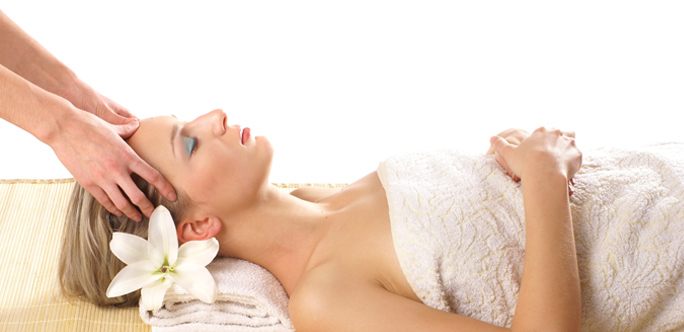The Benefits of Massage Therapy
Massage is not just a way to relax and loosen tense muscles. Regular therapeutic massage treatments can help to ease the suffering of a number of chronic health conditions.
Therapeutic and relaxation, or Swedish, massage have some distinct differences. A Swedish massage is commonly offered at a salon or day spa; therapeutic massage is typically done at a wellness center or medical office. Another important difference is the intensity and application of pressure on the body. “For relaxation, there is moderate pressure applied at a more superficial level all over the body that induces calmness,” said K. Ashley Caldwell, NCTMB, massage therapist at Healing Hands, Bethlehem. “Therapeutic massage is geared more toward health. There is deeper pressure in concentrated areas to help soft tissue imbalance.” Unlike a Swedish massage, most people don’t usually fall asleep during a therapeutic procedure.
Medical professionals often recommend therapeutic massage as an additional treatment for patients with acute pain caused by an injury or other condition. “If applied appropriately, it can be used to treat just about anything,” says Susan Amato, massage therapist at Kula Heart Yoga, Nazareth. Therapeutic massage has been particularly helpful for chronic disorders like arthritis, sciatica, migraine headaches, and fibromyalgia (“fiber muscle pain”), a condition defined by generalized pain all over the body.
Although there are many different specialties within therapeutic massage, some of the most common techniques are deep tissue (applying pressure on knots to relieve muscle tension), myofascial trigger point (easing tension of both muscles and their connective tissue), neuromuscular (alternating levels of focused pressure on areas of muscle spasms; commonly used to relieve sciatic nerve and lower back problems), and Rolfing Structural Integration, a highly specialized modality developed by Dr. Ida P. Rolf that takes massage one step further and, according to Caldwell, “re-organizes all of the soft tissue in your body. There is very deep pressure involved. It’s good for anyone that has an acute condition or has pain caused by a certain activity.” She does not practice this modality, but explained that practitioners must complete a specific 10-step training protocol.
Chronic pain sufferers may want to consider seeing a massage therapist before their condition gets worse. “Too often I see clients, who use massage as a last resort, find out they should have done it first,” Caldwell says. “Massage is not intended to cure, but it can help to alleviate pain and improve a person’s overall sense of wellness and mobility.” Massage can help people of all ages. Caldwell has worked on clients as young as nine (many young people receive therapeutic massage for sports, dance, and cheerleading injuries) and as old as 97.
A good intake at the first session with a massage therapist can go a long way toward making a new client feel comfortable with the process. Talking with the practitioner throughout the session is also important—if the pressure is too intense, if other areas are painful, or if any part of the process is uncomfortable, the therapist should know. Modesty is often an issue for folks considering massage. Amato says that as long as a new patient is open to the various modalities, she works to help them feel as comfortable as possible. “I’ll start with a really short massage, or they can keep their clothes on, or I’ll do a chair massage. Letting them keep their clothes on helps a lot—they just feel comfortable.”
Like any investment of time or money, it’s important to do your homework first when choosing a massage practitioner. Both Amato and Caldwell recommend that new patients look for a licensed massage therapy professional (as of December 2010, all massage therapists in Pennsylvania are required to be licensed) and to not be afraid to ask questions, especially about the modalities they practice. Do some research and find a practitioner who can provide what you need.
From colds to flu, cholesterol to cancer and everything in-between, we’ve got you covered. Turn to “Health Watch” for the latest information on keeping yourself and your family healthy.





